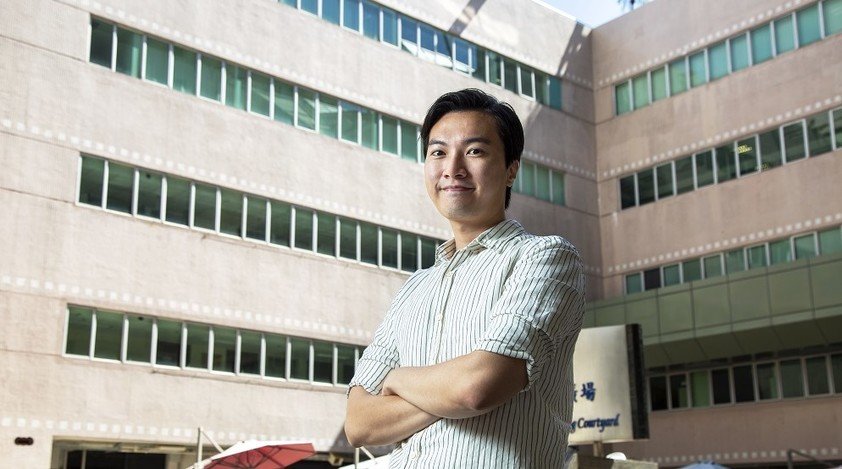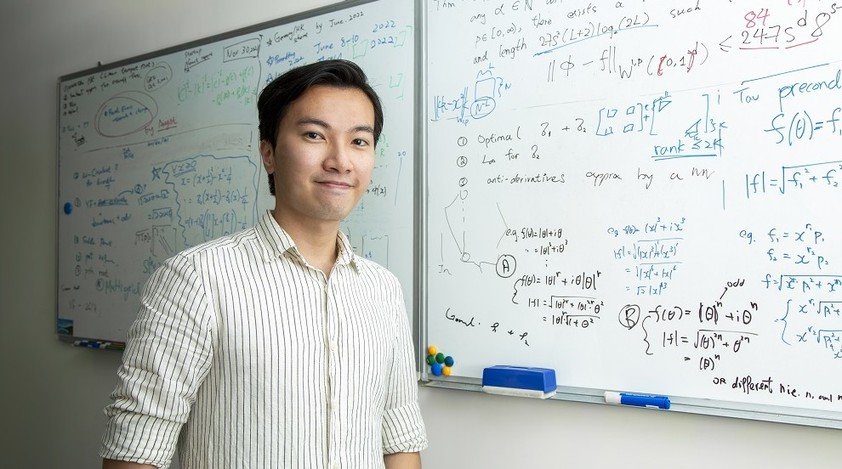Discover HKBU
More than just crunching the numbers
30 Jul 2021
A better imaging system could have a powerful impact on scientific and medical research. But how can we de-noise, reconstruct or segment an image so that we can get more information from it? And can mathematics be used to analyse magnetic resonance imaging (MRI) scans or other images to help doctors diagnose diseases?
These are the kind of questions that intrigue Dr Sean Hon, Assistant Professor of the Department of Mathematics, and he is working on developing mathematical tools and insights that can tackle such problems in the real world.
Using maths to solve real-life problems
Dr Hon is part of the imaging sciences and scientific computing groups in the Department of Mathematics. He is also active in the University's Centre for Mathematical Imaging and Vision, where he and his collaborators have been researching the application of mathematical and statistical techniques to vision and imaging problems.
To the Hong Kong-born mathematician, connecting mathematical concepts and techniques to various fields has made applied maths a fascinating area of study. "We can use a variety of mathematical tools to solve problems coming from diverse fields, ranging from business, finance and biology to physics and even the creative industries," he says, giving the example of the snow graphics in the animated film Frozen, which required computational models.
He draws a comparison between applied maths and a toolbox to illustrate the nature of his work. "Scientists may use certain tools to solve a problem, but in applied maths, we are interested in looking into the toolbox. By understanding the formulation and the nature of the solution, we can develop faster and more reliable tools," he says.
Figuring out the right direction
To Dr Hon, his journey in maths is one of self-discovery. Maths has always been his favourite subject and it was an easy choice for an undergraduate major, but figuring out how to use it after university was challenging – until a summer programme shifted his interest to the field of applied maths and helped him acquire a better understanding of particular mathematical techniques and their applications. He later joined an international exchange programme, in which he worked with a team of students from the US on a research project, and the experience sparked his interest in developing a career in research and higher education.
After obtaining a bachelor's and master's degree from The Hong Kong University of Science and Technology, he pursued a doctoral degree at the University of Oxford on a Croucher Scholarship. Prior to joining HKBU, he was a research fellow at the National University of Singapore.
Putting diverse expertise together
Dr Hon continues to challenge himself at HKBU, not just in his mathematical research, but also in areas where maths is employed to illuminate other disciplines. His research on the preconditioning for Toeplitz-related systems, a topic that plays an important role in scientific computation, has received over HK$850,000 in funding from the Early Career Scheme 2021/22 under the Research Grants Council. For this project, he was recently honoured with an Early Career Award and an additional grant of HK$100,000 for his outstanding research achievements and for undertaking educational activities that train undergraduate students to conduct research. He has also received a start-up allowance of HK$500,000 from the Croucher Foundation.
The emerging field of data science, where maths and other scientific disciplines converge, has also captured his attention. "This is an interdisciplinary field that uses techniques drawn from maths, statistics and computer science to solve problems in various domains. Our department is exploring opportunities for research collaborations in data science within the Faculty of Science," he says.
Teaching also helps him feel at home at the University, both as a collaborator and a lecturer. "During the pandemic, our colleagues have often met to discuss different ways to facilitate class interaction and ensure the smooth running of classes and exams online," says Dr Hon, who teaches numerical linear algebra and ordinary differential equations. "I really enjoy teaching and exchanging ideas with the students. I try to make use of real-life examples that relate to the application of maths to make my classes more interesting, while also showing students that maths is important in our everyday lives."

